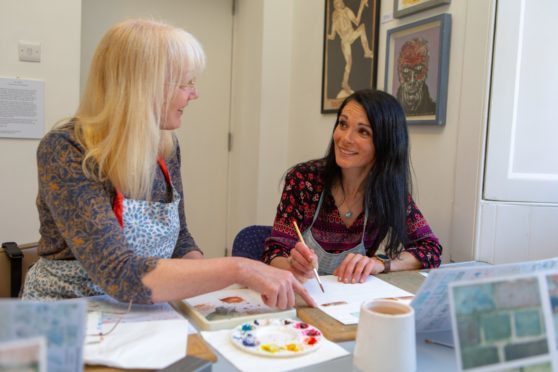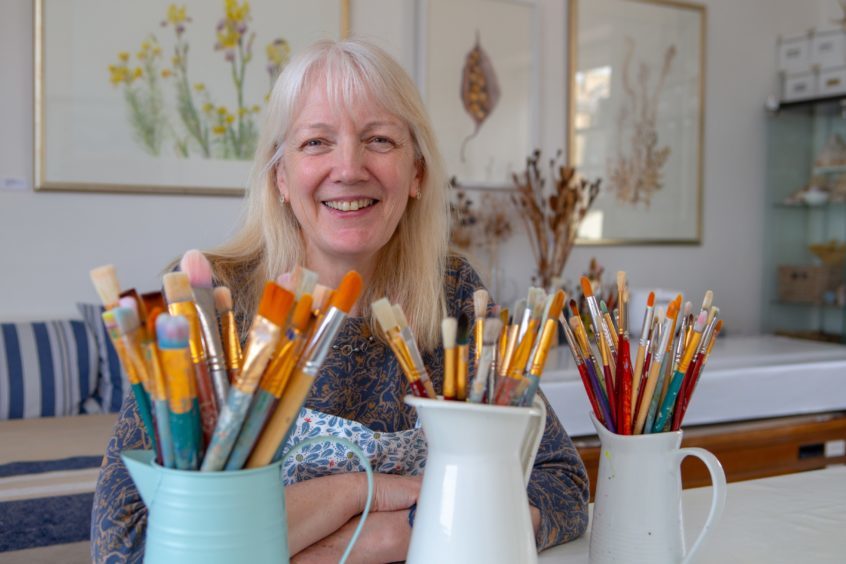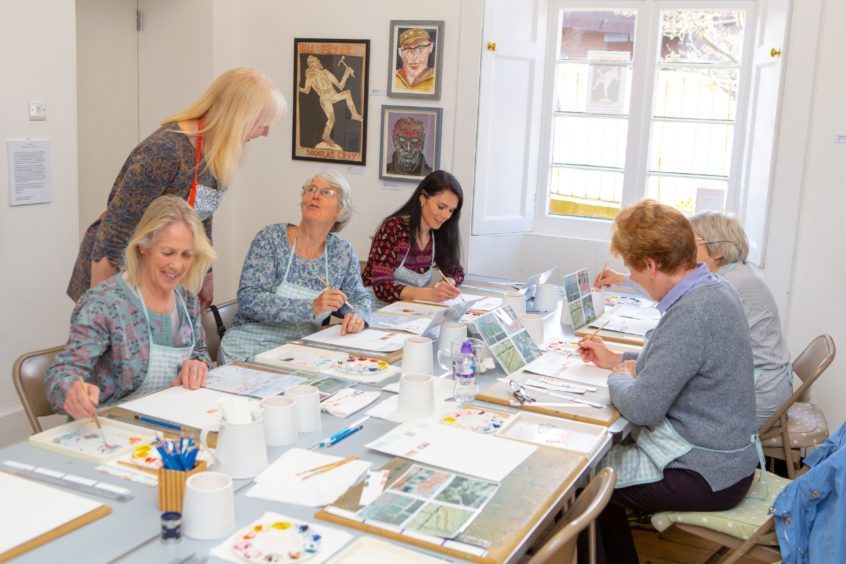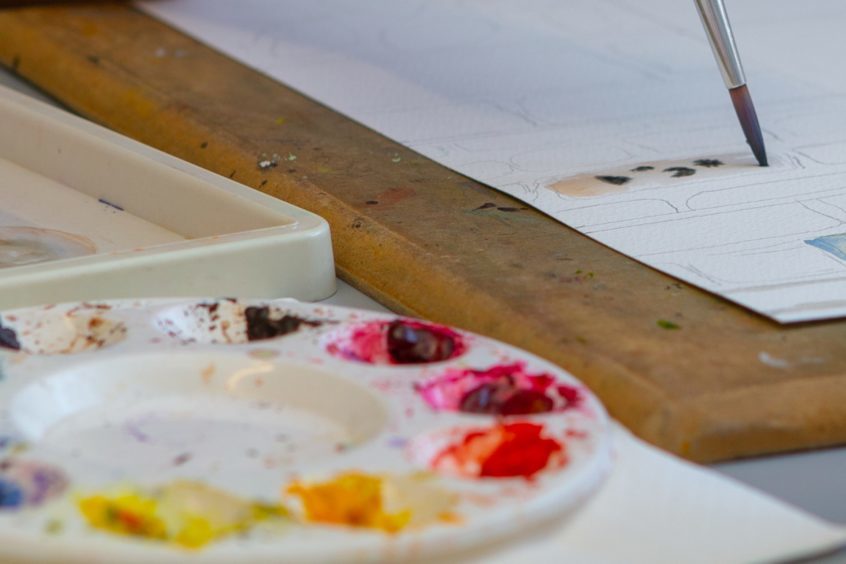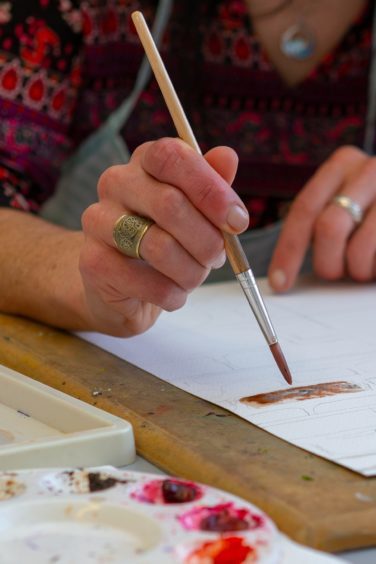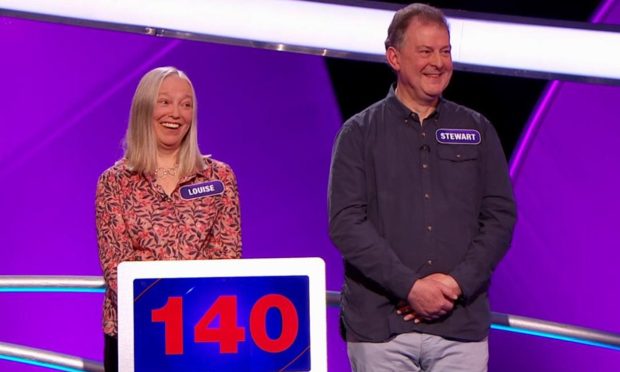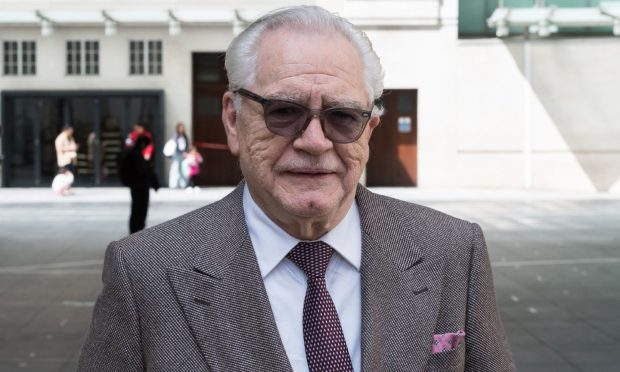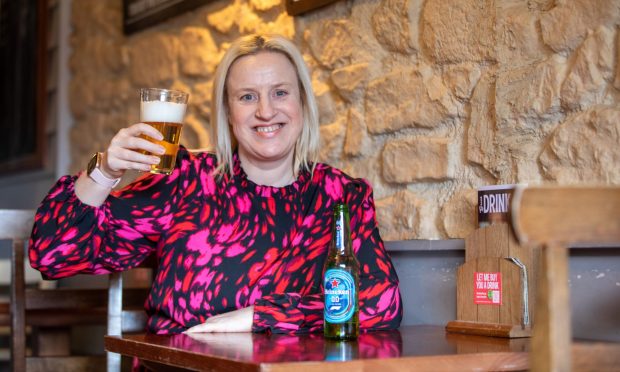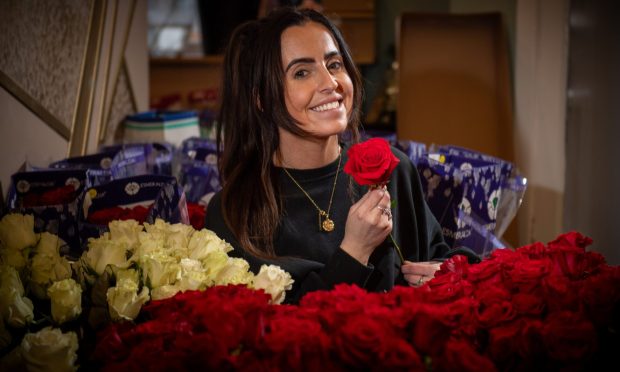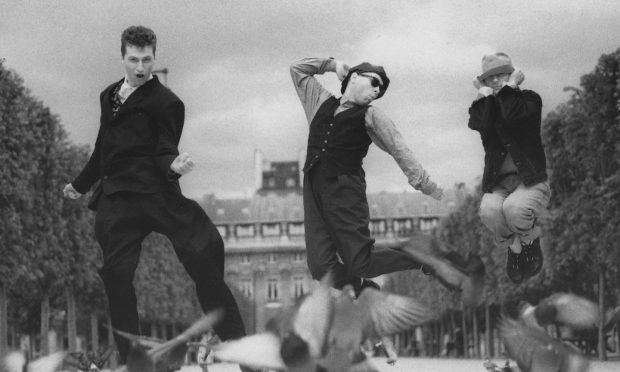Gayle brushes up on her artistic skills and finds out about a group showcasing disused Fife railway buildings which have been transformed into artists’ studios
Stunning watercolours of flowers, trees and fungi line the walls of Lynette Gray’s Kinghorn studio.
Her husband Douglas’ surreal artworks are also displayed, but they have an altogether different feel to them, with brave, bold colours, mountain scenes and the odd bare boob.
Both artists will be exhibiting their work at the Artline Open Doors Weekend, running on May 5 and 6. Their studio is among 11 venues in Fife taking part.
From North Queensferry to Cupar, they were all once unused and semi-derelict rooms which have been transformed into artists’ studios or heritage centres.
While Lynette’s studio is a former ladies waiting room, the building in which she and Douglas work also housed a salt store and a railway worker’s bedroom.
Long derelict, the rooms were falling into a state of disrepair and so in 2010, under Scotrail’s Adopt a Station Scheme, Lynette lovingly restored them into a gallery and studio.
Ahead of the Artline event, I’ve been invited to take part in one of Lynette’s classes.
The last time I picked up a paint brush was at school – so quite a good few years ago.
Lynette’s beginner classes were full, so I’m joining an advanced class, in which everyone has been coming along for at least a decade.
Classes run in six week blocks and this one is a fascinating and intricate study of old buildings.
“I paint a lot of flowers, nature and landscape, as well as buildings and the more abstract,” says Lynette, 61.
“I’m inspired by things like rocks and trees.
“We’ve already done a class on perspective so today we’re focusing on textures of buildings. It should be easy enough to follow!”
With that, she plonks down a sheet of photographs of old bricks and stones in front of each of us.
The plan is to attempt to replicate these photos as closely as possible using watercolour paints.
We start by sketching them in pencil, noting all the rough edges and cracks.
The first problem is mixing the right colour, but I manage to come up with something vaguely similar to the blue-hued brick.
Lynette then shows us how to create different effects, simply by painting the outside of our sketched bricks first and then by filling the centre. This, she refers to, as “wet technique”.
With the next brick, we allow the outside to dry first before filling.
The class gets increasingly complex, with us adding clean water, leaving some areas dry and “dropping” colour on using the tip of our brushes.
I battle on, not able to gauge how well I’m doing and thinking I’d probably have found a Jackson Pollock splash-and-dash style class easier (no disrespect, Jackson – you were a genius).
Looking down at my rectangles and odd shapes of brown and bluey hues, I wonder what Lynette makes of it.
“It’s great,” she beams. “In all my years of teaching, I’ve had very few pupils that can’t paint or that can’t be helped.
“Most people improve if they’re taught what to do. A lot of people think they can’t do anything but if they break things down into small steps, confidence builds and before you know it, they’ve painted something fantastic.”
While she sketches and takes photos on reccies, Lynette says she “has to know” a place before she paints it.
Another artist taking part in Artline is Burntisland’s Susy Kirk, who produces “wearable paintings” on wool and silk.
There’s also Gingerbread Designs, who works with a range of materials including Harris tweed, felt, fabric and ceramics, mixed-media artist Karen Trotter of North Queensferry, and Ladybank’s Kirsty Lorenz, a visual artist for whom flowers are a central subject.
Lynette will also be exhibiting at Aberdour’s Signal Box Studio, which was lovingly restored last year.
info
ScotRail’s Adopt-a-Station scheme, launched in 2005, was designed to breathe new life into communities along the country’s rail lines. More than 275 ScotRail stations are now part of the programme. Restoration was made possible by grants from the Railway Heritage Trust and the Stations Community Regeneration Fund.
The Artline group was formed in 2015 to represent adopters on the railway through Fife. During Artline, artists and crafters will showcase their work, as well as offering demos.
